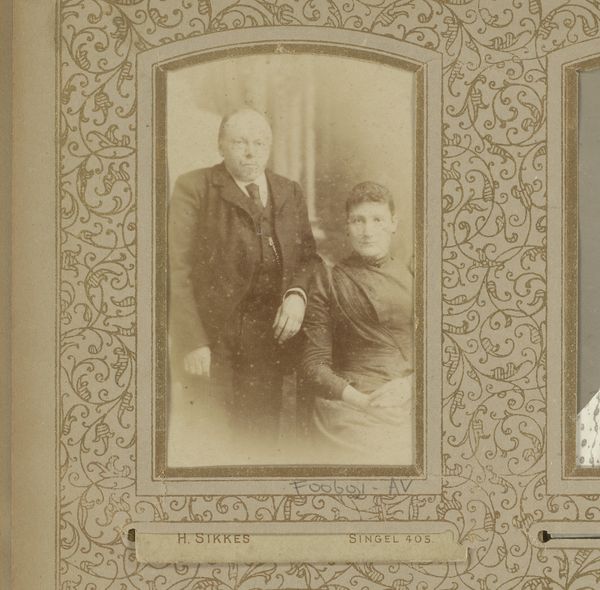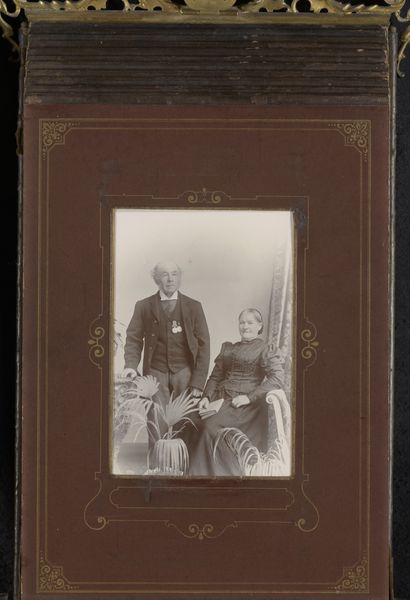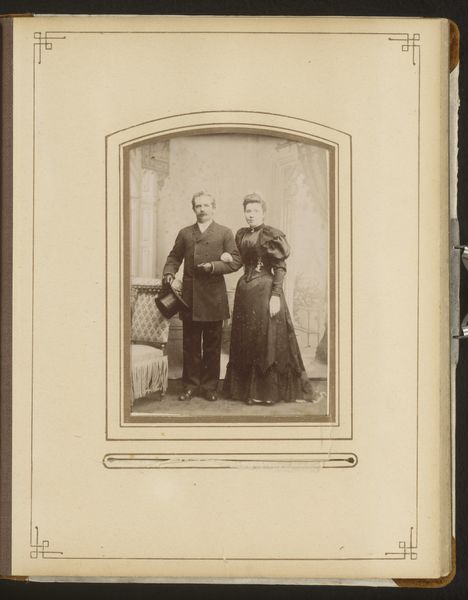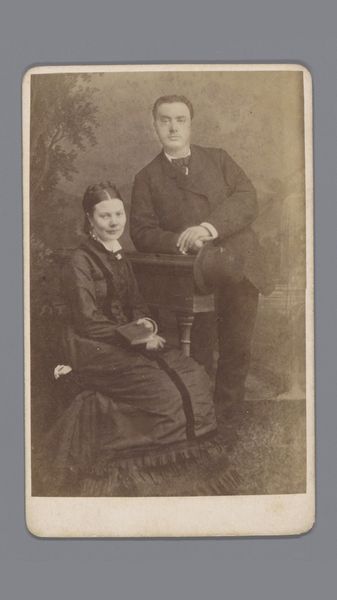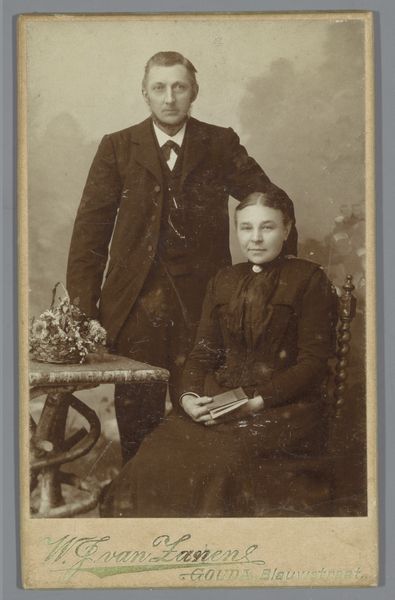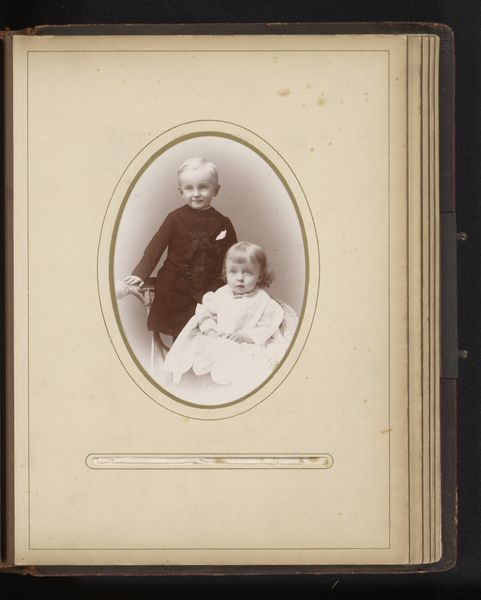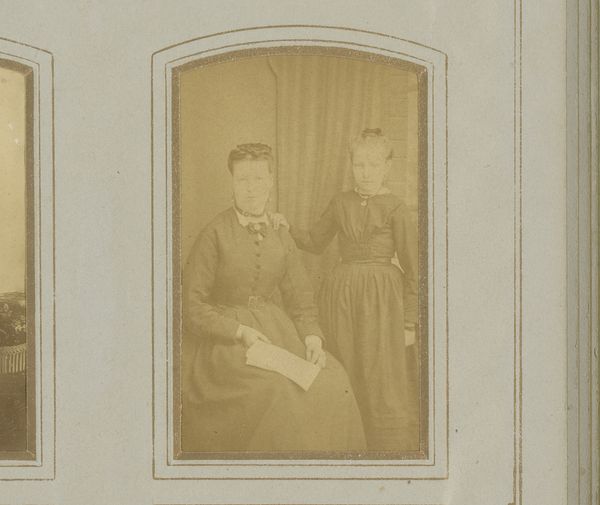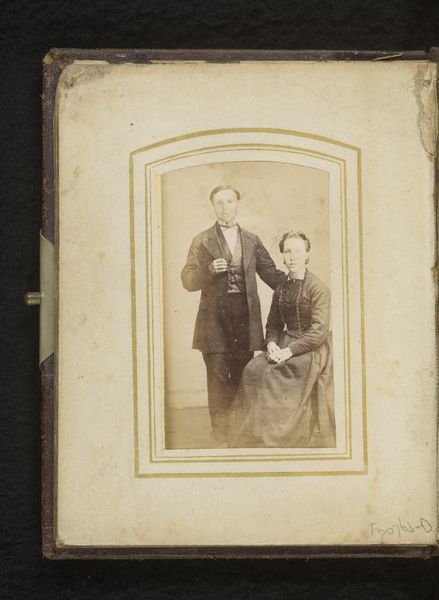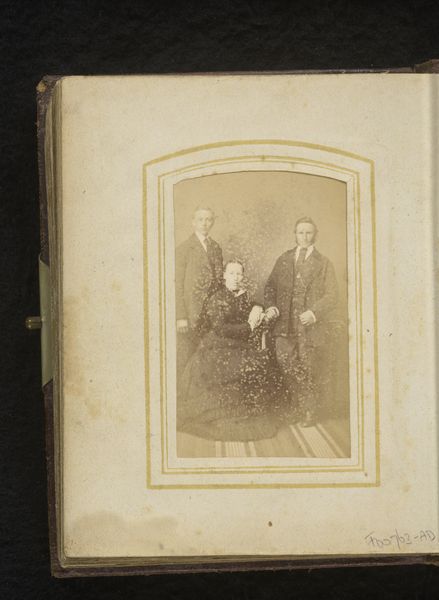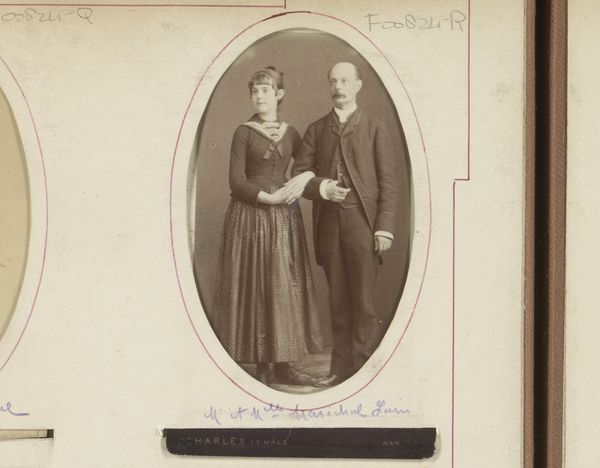
photography
#
portrait
#
still-life-photography
#
photography
#
genre-painting
#
realism
Dimensions: height 86 mm, width 56 mm
Copyright: Rijks Museum: Open Domain
This portrait by Joseph Grampa presents a couple, clad entirely in black, their solemn expressions hinting at the weight of their existence. Black, since the Roman era, has been associated with mourning, sobriety, and authority. Here, it speaks of a life possibly lived in adherence to strict societal norms, or perhaps under the shadow of loss. Note how the woman carries a book. Often, books signify knowledge and piety, but their interpretation varies widely across time and cultures. In medieval art, a book in the hands of a figure could denote divine wisdom or a sacred text, whereas, in later periods, it might represent secular learning or personal reflection. Consider the enduring symbol of darkness in the human psyche—the space where the unknown and the repressed reside. The couple's somber attire may subconsciously evoke this realm, inviting us to ponder the unseen aspects of their lives and the collective human experience. The cyclical journey of symbols sees black, for instance, transform from a marker of grief to a symbol of elegance and power. The images we create and the symbols they carry reflect our deepest fears, desires, and memories, echoing through time in an unending cycle of cultural transmission and reinterpretation.
Comments
No comments
Be the first to comment and join the conversation on the ultimate creative platform.
